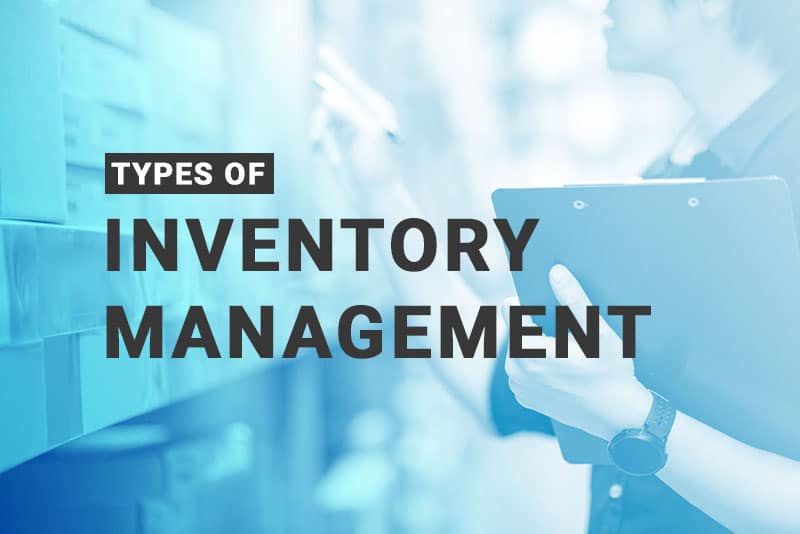
Reviewing and implementing each inventory management process for your business can be less than glamorous, but it’s vital for your continued success. In the past, this used to mean painstaking hand counts of all of your inventory, but today’s technology has changed this.
Nowadays, inventory management can be accomplished much easier through the use of technological innovations, from inventory management software to robots. However, today’s global society also adds new challenges, especially where things like shipping and order fulfillment are concerned.
Want to greatly improve your company’s inventory management?
Why Is Inventory Management Important?
Inventory management is a crucial concept when growing a company because stagnant inventory isn’t making you money. Like cash flow, inventory flow is a necessary and fundamental process to the life cycle of a successful business. Managing your inventory well can reduce the amount of your goods that expire or go out of fashion while still in your possession and can save on warehousing costs.
Types of Inventory Management Processes
There are a couple of systems which can help with the inventory management process.
Periodic Inventory System
One of the most common inventory management systems at the retail level is the periodic inventory system. This system does not track inventory day-by-day but instead focuses on snapshotting periodic windows, usually including several months at a time.
The way this inventory management process works is that employees physically count each item and make a record of it as they go. This happens at the beginning and ending of a given period. While it only comes up every so often, it has the drawback of making inventory time very difficult for your workers as they are expected to keep the business running while also performing time-consuming and exacting extra duties.
This is one of the cheapest systems to use since it doesn’t require any additional technology costs to implement, but the strain on your employees can cause hurried counts, errors, and even fraud. This system is regarded as a good option for small businesses and for those which deal in largely seasonal goods as it allows for easy evaluation of what sold or did not sell during any given season.
Perpetual Inventory System
By comparison, perpetual inventory systems involve constant, day-by-day updates on your inventory, allowing for management in real-time. While this can be a time-consuming and expensive inventory management process to set up, often involving specific equipment and software dedicated to the effort, a perpetual inventory system’s upkeep labor costs are substantially lower than something like a periodic system.
For larger businesses with multiple warehouses, the cost of implementation and databasing all of them together can be prohibitively expensive. These types of systems are also vulnerable to long-term mismatches in what the physical inventory is versus what the system believes the physical inventory to be. This can be caused through system errors but can also be the result of human mistakes or theft. Regardless of cause, over time it can add up because there are no regular physical countings of items to double-check what the system believes is there.
Technological Solutions for the Inventory Management Process
Once you choose between a periodic or perpetual inventory system, or if you experiment with one of the various hybrid options that exists, consider what technological solution best serves your needs.
Pen and Paper
These days, pen and paper inventory management is a largely outmoded inventory management process mainly used by hobbyists or sole proprietors. Nevertheless, it needs to be mentioned as a baseline system which is still extant. Executed properly, pen and paper management emphasizes the human in a world increasingly defined by the machine. While technological solutions tend to produce fewer errors compared to human-managed ones, machines currently lack the judgment that a person with hands-on knowledge of the items and transactions can deliver.
Barcode System
The barcode has been around since the 1950s, although it didn’t enter common use until the late 1960s. The technology is stable, cheap, and easily understood by workers and executives alike. Today, barcodes interface cleanly with inventory management databases, allowing for automatically updating inventory levels as sales are made.
The benefits of using a barcode system for stock management are many, including the speed and ease of use, eliminating any mistakes caused by manually entering items, automatically recorded transaction history, and, of key importance, making it easy to move goods between warehouses and from receiving to shipping.
However, barcodes do have their struggles, as anyone who has used the self-checker at a grocery store is well aware. Additionally, sometimes barcodes can get smudged or torn and fail to read properly, resulting in costly errors.
Radio Frequency Identification (RFID) System
RFID systems utilize a combination of active or passive readers to manage inventory. RFID is a particularly useful inventory management process for automated warehousing, as it doesn’t have some of the same physical limitations of barcodes. RFID systems are also more consistent than barcodes. While an employee may forget to scan an item’s barcode as it leaves a facility, functional RFID readers positioned strategically at entrances and exits will always track an item accurately.
However, RFID is easily more expensive than a barcode system, to the point where return on investment analysis is the only real way to tell if a swap to the system is worth it or not. RFID can also be vulnerable to radio interference, rendering the readers inoperable. There is not yet a global standard for the technology. If you’re shipping to a country with different standards, you may have to use their technology, which can add to the system’s costs.
Robotics
Many warehouses are now using robots to complete many inventory tasks that were once relegated to humans. Robots can quickly count available inventory and retrieve it for delivery. Many of the world’s largest companies use robots in their own warehouses. Robots can greatly increase your ability to meet demand and can perform with accuracy rates at 99.9% or greater for picking inventory, making them an invaluable tool for keeping up with today’s demand.
Real-Time Data Capture
Instead of counting up inventory by hand or keeping inaccurate running estimates, it’s now possible to capture data about your inventory in real-time. Your inventory can essentially report on itself, giving you a clearer picture than ever of the state of your business. Inventory management software can relay information from the point of sale to your warehouse and then onto you, letting you know just how much inventory needs to be replaced. The speed and accuracy of this approach can help your business keep up with today’s consumer expectations.
Use Ship My Orders to Facilitate Your Business’s Inventory Management Process
There are many new technologies available to streamline and optimize every inventory management process in your business. Adopting these can help your business better compete in a global economy, but it’s hard to do it alone. The right 3PL fulfillment partner could prove invaluable to your efforts to modernize your company’s inventory control. At Ship My Orders, we offer order fulfillment services utilizing the latest technologies, making us the ideal partner for keeping your business on the cutting edge.

-1.png)


